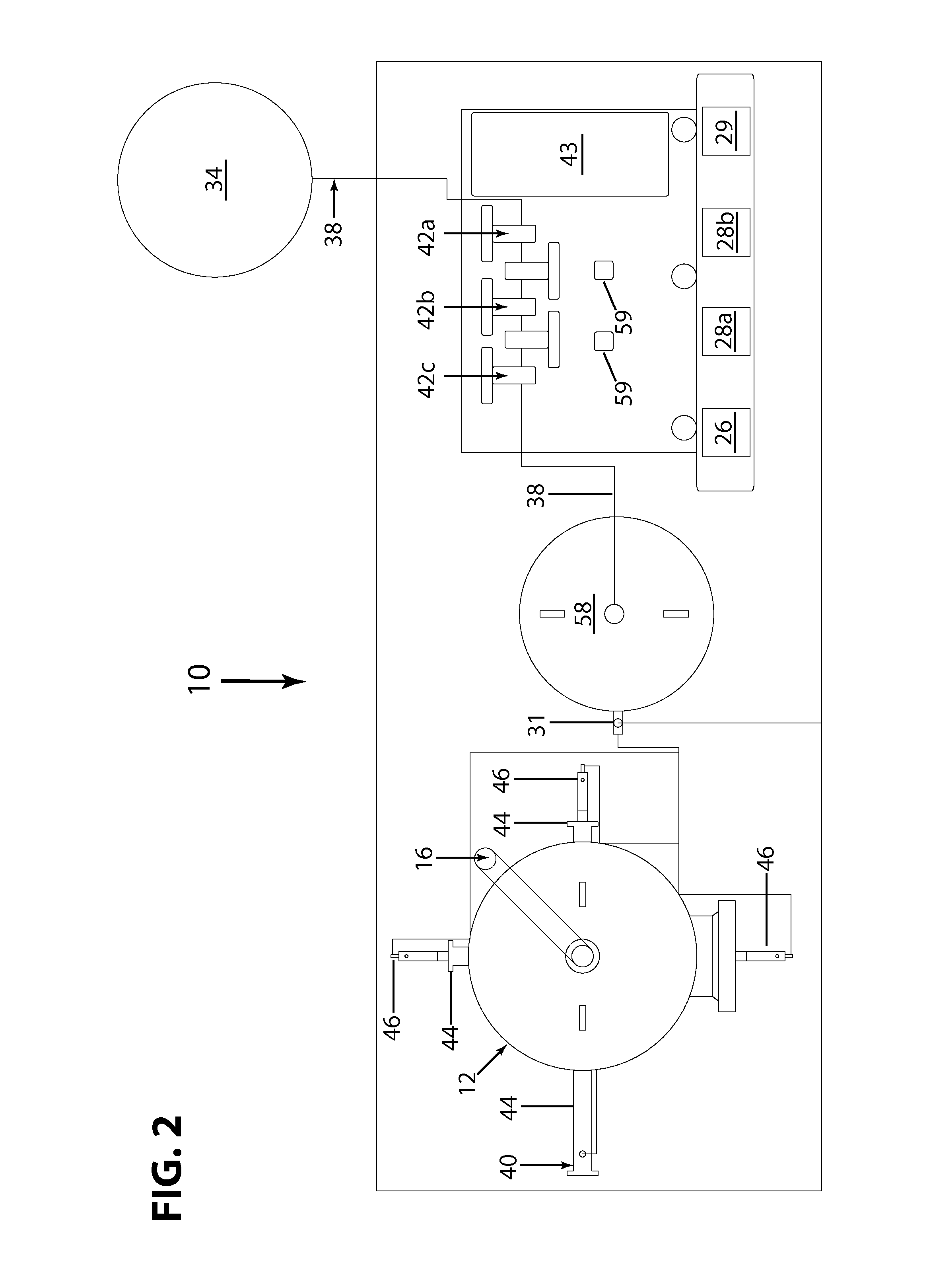Process stream decontamination systems and methods with atomization optimization
a technology of atomization optimization and stream decontamination, which is applied in the direction of machines/engines, process and machine control, instruments, etc., can solve the problems of pipeline corrosion, narrowing of the line, and corroding of the pipeline, so as to optimize the droplet size, maximize pump performance, and verify productivity
- Summary
- Abstract
- Description
- Claims
- Application Information
AI Technical Summary
Benefits of technology
Problems solved by technology
Method used
Image
Examples
Embodiment Construction
[0026]FIGS. 1 and 2 illustrate an exemplary decontamination system 10 that is constructed in accordance with the present invention. The decontamination system 10 is operably associated with a process stream that contains at least one contaminant of interest to be neutralized. In particular embodiments, the process stream can be natural gas flowing through a pipeline. The process stream could also be a flow of other liquids, such as crude oil or water. Typical contaminants include hydrogen sulfide (H2S), mercaptans, carbon dioxide (CO2), oxygen (O2), water (H2O) and biological populations. In addition, a detected “contaminant,” as discussed herein, can include conditions that can lead to contaminants, such as conditions that are ideal for hydrate formation or corrosion.
[0027]In certain embodiments, the decontamination system 10 of the present invention can be configured as a portable, modular system that is designed to be readily moved and integrated into an existing facility having ...
PUM
| Property | Measurement | Unit |
|---|---|---|
| diameter | aaaaa | aaaaa |
| pressure | aaaaa | aaaaa |
| pressure | aaaaa | aaaaa |
Abstract
Description
Claims
Application Information
 Login to View More
Login to View More - R&D
- Intellectual Property
- Life Sciences
- Materials
- Tech Scout
- Unparalleled Data Quality
- Higher Quality Content
- 60% Fewer Hallucinations
Browse by: Latest US Patents, China's latest patents, Technical Efficacy Thesaurus, Application Domain, Technology Topic, Popular Technical Reports.
© 2025 PatSnap. All rights reserved.Legal|Privacy policy|Modern Slavery Act Transparency Statement|Sitemap|About US| Contact US: help@patsnap.com



